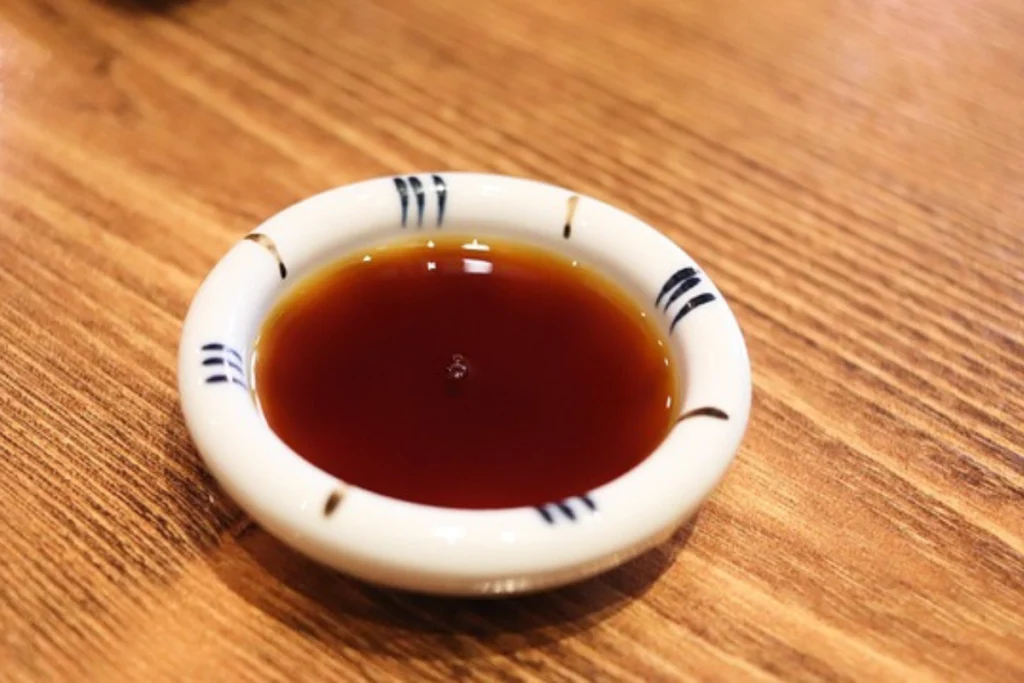
Ponzu sauce is a beloved condiment in Japanese cuisine, celebrated for its balanced blend of tangy, savory, and slightly sweet flavors. Known for its versatility, ponzu sauce enhances a range of dishes, from light sashimi to hearty grilled meats, as a marinade, dipping sauce, and salad dressing. But what exactly is ponzu sauce, and why has it become a staple not only in Japan but around the world?
For a deeper look at the essential ingredients in ponzu, see this Guide to Japanese Ingredients in Ponzu Sauce. Additionally, if you’re exploring ways to use Japanese sauces in your cooking, check out Using Japanese Sauces in Cooking.
What is Ponzu Sauce?
Ponzu sauce is a traditional Japanese condiment that combines the tanginess of citrus with the savory depth of soy sauce and umami-rich dashi broth. Its balanced flavor profile makes it an excellent companion for various dishes, enhancing both lighter flavors like tofu and fish and more robust ones like grilled meats or roasted vegetables.
Unlike plain soy sauce, which primarily adds saltiness, ponzu sauce introduces a refreshing, tangy component from Japanese citrus fruits like yuzu, giving it a lighter and more complex taste. This unique mix of citrus, soy, and umami has made ponzu sauce a favorite among chefs and home cooks alike.
The Origins and Cultural Significance of Ponzu Sauce
The word “ponzu” comes from the Dutch term “pons,” which means punch, a reference to its bright, punchy flavor. Historically, ponzu originated as a simple blend of citrus and soy, but over centuries, it evolved to include additional ingredients like mirin (sweet rice wine) and dashi (a savory Japanese stock). These components add depth and complexity, turning ponzu into a versatile sauce with wide applications in Japanese cuisine.
Ponzu is not just a sauce—it’s a cultural icon in Japan, used in everything from dipping sauces for sashimi to dressings for salads. Its unique ability to bridge the flavors of soy, citrus, and umami has led to its popularity not only in traditional Japanese cooking but also in fusion cuisine worldwide.
Flavor Profile of Ponzu Sauce
Ponzu’s flavor is distinctive and complex, with notes of tanginess from citrus, saltiness from soy sauce, and a subtle sweetness balanced by umami-rich dashi. This combination of flavors makes ponzu ideal for enhancing the natural flavors of foods without overwhelming them.
Key flavor notes in ponzu sauce:
- Tangy: Japanese citrus fruits such as yuzu, sudachi, or kabosu provide the bright, acidic component.
- Salty and Savory: Soy sauce brings a robust umami depth.
- Umami: Dashi, typically made from bonito flakes and kombu, introduces a rich, savory dimension.
- Slight Sweetness: Mirin adds a gentle sweetness that rounds out the flavors.
Key Ingredients in Ponzu Sauce
Ponzu sauce relies on a small set of carefully chosen ingredients, each contributing a unique aspect to the overall flavor profile. Let’s break down these components and their roles:
Essential Components
- Soy Sauce: Forms the salty, savory base of ponzu.
- Citrus Juice: Traditionally sourced from Japanese fruits like yuzu or sudachi, but lemon or lime are acceptable substitutes.
- Rice Vinegar: Adds mild acidity that enhances the tangy flavor.
- Mirin: A sweet rice wine that balances the tartness and adds depth.
- Dashi: A Japanese broth made from katsuobushi (bonito flakes) and kombu (kelp), providing rich umami flavor.
For a more detailed exploration of dashi’s significance in Japanese cuisine, see Importance of Dashi in Japanese Flavors.
Soy Sauce: The Savory Foundation
Soy sauce is the backbone of ponzu, adding a salty, umami richness that complements the citrus elements. In Japanese cooking, soy sauce is a core ingredient, and in ponzu, it provides depth and balance. For those with dietary restrictions, tamari can be used as a gluten-free alternative without losing the savory quality of soy sauce.
Japanese Citrus (Yuzu, Sudachi, Kabosu)
The bright, tangy character of ponzu comes from Japanese citrus fruits like yuzu, sudachi, and kabosu. These fruits have a uniquely fresh and aromatic flavor that’s difficult to replicate. If you’re unable to find Japanese citrus, a combination of lemon, lime, and orange can be used, though they won’t provide the exact flavor.
Vinegar: Adding Mild Acidity
Rice vinegar is typically used in ponzu sauce to add mild acidity that complements the citrus without overwhelming it. Its gentle flavor accentuates the brightness of the sauce, enhancing the refreshing qualities of the citrus. If you don’t have rice vinegar on hand, apple cider vinegar or white wine vinegar can be used as substitutes.
Mirin: Sweetness and Complexity
Mirin, a sweet rice wine, brings a hint of sweetness and depth to ponzu, balancing the tartness of the citrus and the saltiness of the soy sauce. It’s mildly alcoholic but adds a smooth, mellow flavor. If you don’t have mirin, a small amount of sugar or sake can serve as a substitute, though mirin’s unique flavor is challenging to replicate.
Dashi: The Umami Element
Dashi is a savory broth made from katsuobushi (bonito flakes) and kombu (kelp), adding a rich umami flavor to ponzu. This element gives ponzu its depth, making it ideal for pairing with savory dishes. For a vegan-friendly version, kombu and shiitake mushrooms can be used to create a similar umami taste without fish-based ingredients.
How to Make Ponzu Sauce at Home
Traditional Ponzu Sauce Recipe
Making ponzu at home allows you to enjoy fresher, richer flavors and control over the ingredients. Here’s a classic recipe to get started:
Ingredients:
- 1/2 cup soy sauce
- 1/4 cup rice vinegar
- 1/4 cup fresh yuzu, lemon, or lime juice
- 1 tablespoon mirin
- 1 small piece kombu (about 2 inches)
- 2 tablespoons katsuobushi (bonito flakes)
Instructions:
- Combine all ingredients in a glass jar or container.
- Allow the mixture to steep in the refrigerator for 12-24 hours to let the flavors meld.
- Strain out the solids before using.
This recipe captures the essence of traditional ponzu, allowing you to adjust each ingredient to your taste.
Vegan Ponzu Sauce Recipe
For those seeking a vegan-friendly version, this recipe uses shiitake mushrooms and kombu to replicate the umami flavors of bonito flakes without animal products.
Ingredients:
- 1/2 cup soy sauce or tamari (for gluten-free)
- 1/4 cup rice vinegar
- 1/4 cup fresh yuzu or lemon juice
- 1 small piece kombu
- 2 dried shiitake mushrooms
Instructions:
- Combine all ingredients in a jar and refrigerate for 12-24 hours.
- Remove the kombu and shiitake mushrooms after steeping.
- Stir well before serving.
This vegan ponzu maintains the authentic flavors of traditional ponzu without the fish-based ingredients.
Homemade vs. Store-Bought Ponzu Sauce
While store-bought ponzu is convenient, making it at home often results in a fresher, more vibrant flavor profile. Many commercial ponzu sauces contain preservatives or added sugars that can alter the taste. Homemade ponzu lets each ingredient’s flavor shine, with a depth that’s hard to replicate with store-bought options.
Uses and Applications for Ponzu Sauce
Ponzu sauce’s versatility makes it suitable for a wide range of dishes in both traditional Japanese and fusion cuisines.
Traditional Japanese Dishes Using Ponzu
In Japanese cuisine, ponzu is commonly used as:
- Dipping Sauce: Perfect for sashimi, tempura, and dumplings.
- Salad Dressing: Adds brightness to seaweed and vegetable salads.
- Hot Pot Condiment: Enhances the rich flavors of hot pot dishes.
- Marinade for Fish and Meat: Provides a light, tangy flavor to grilled or pan-fried proteins.
Fusion and Western Dishes with Ponzu
Ponzu’s balanced flavor profile also makes it a great addition to Western-style dishes, adding a unique touch to:
- Salads: Drizzle over green or grain-based salads for a refreshing taste.
- Glaze for Roasted Vegetables: Use as a finishing glaze for roasted or grilled vegetables.
- Marinades for Tofu or Tempeh: Adds umami and tanginess to plant-based proteins.
Pairing Ponzu with Different Foods
Ponzu pairs exceptionally well with various foods, including:
- Seafood: Complements the delicate flavors of fish and shellfish.
- Tofu: Adds brightness and depth to tofu-based dishes.
- Grilled Vegetables: Enhances the natural sweetness of roasted or grilled vegetables.
FAQs About Ponzu Sauce
What can I substitute for ponzu sauce?
- A mix of soy sauce, lemon juice, and a bit of vinegar can create a similar tangy, savory flavor profile.
Is ponzu sauce gluten-free?
- Traditional ponzu sauce is not gluten-free due to soy sauce, but using tamari as a substitute makes it gluten-free.
What’s the difference between ponzu sauce and soy sauce?
- Ponzu combines soy sauce with citrus, adding tanginess and lightness, while soy sauce is purely savory and salty.
How long does homemade ponzu sauce last?
- Homemade ponzu can be stored in the refrigerator for up to one week, with flavors intensifying over time.
What does ponzu sauce taste like?
- Ponzu has a unique blend of tangy citrus, umami, and a slight sweetness, making it lighter and more versatile than soy sauce.
Conclusion: Discovering the Versatility of Ponzu Sauce
Ponzu sauce is a remarkable blend of Japanese flavors, offering a harmonious combination of citrus tang, savory soy, and umami depth. Whether you use it traditionally as a dipping sauce or creatively in fusion dishes, ponzu brings a refreshing, versatile element to any meal. By understanding what ponzu sauce is made of, you can appreciate the unique roles each ingredient plays, enhancing a wide range of dishes from salads to marinades.
Experiment with homemade ponzu or vegan alternatives to enjoy authentic Japanese flavors in your kitchen. With its bright, balanced profile, ponzu is sure to become a favorite addition to your culinary creations.
